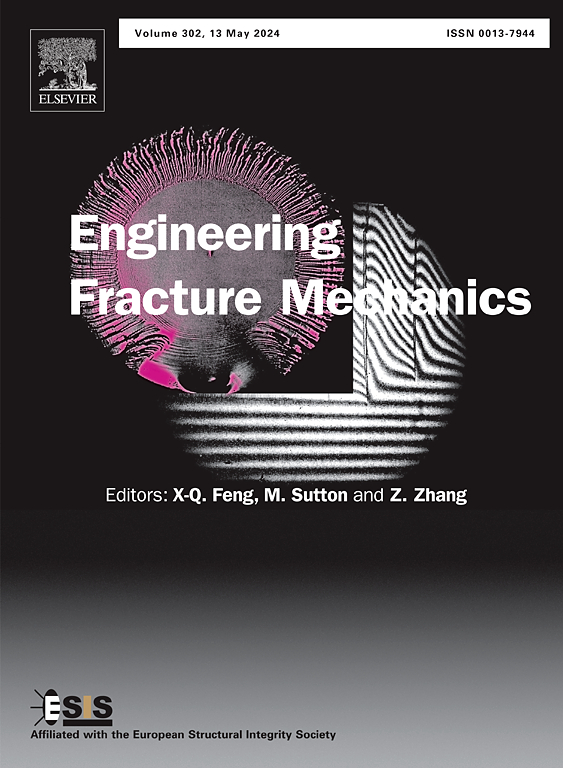Simulating concrete cracking and failure under impact loading using a novel constitutive integration paradigm in non-ordinary state-based Peridynamics
IF 4.7
2区 工程技术
Q1 MECHANICS
引用次数: 0
Abstract
Concrete cracking and failure under external loads are common in infrastructure, particularly under impact conditions where the variability of loads and the complexity of the cracking process present significant challenges. While the bond-based Peridynamic (BBPD) and Ordinary state-based Peridynamic (OSBPD) models are widely used in concrete damage analysis due to the low computational cost, their simple constitutive laws limit their effectiveness in simulating concrete’s response to impact loading. To overcome this limitation, we propose a novel approach that integrates classical constitutive models into the Peridynamics (PD) framework. Specifically, we reformulate the Concrete Damage Plasticity Model 2 (CDPM2) within a non-ordinary state-based PD (NOSBPD) framework, resulting in the CDPM2-PD model. This model incorporates factors such as strain rate effects and strain hardening and introduces a bond damage criterion for both tensile and compressive damage. Through three numerical examples, the CDPM2-PD model demonstrates its ability to accurately capture the cracking and failure process of concrete under impact, showing strong agreement with experimental observations in areas such as failure mode transitions and crack patterns. These results validate the model’s effectiveness and offer a versatile method for integrating classical constitutive models into the NOSBPD framework for complex material analysis.
求助全文
约1分钟内获得全文
求助全文
来源期刊
CiteScore
8.70
自引率
13.00%
发文量
606
审稿时长
74 days
期刊介绍:
EFM covers a broad range of topics in fracture mechanics to be of interest and use to both researchers and practitioners. Contributions are welcome which address the fracture behavior of conventional engineering material systems as well as newly emerging material systems. Contributions on developments in the areas of mechanics and materials science strongly related to fracture mechanics are also welcome. Papers on fatigue are welcome if they treat the fatigue process using the methods of fracture mechanics.

 求助内容:
求助内容: 应助结果提醒方式:
应助结果提醒方式:


